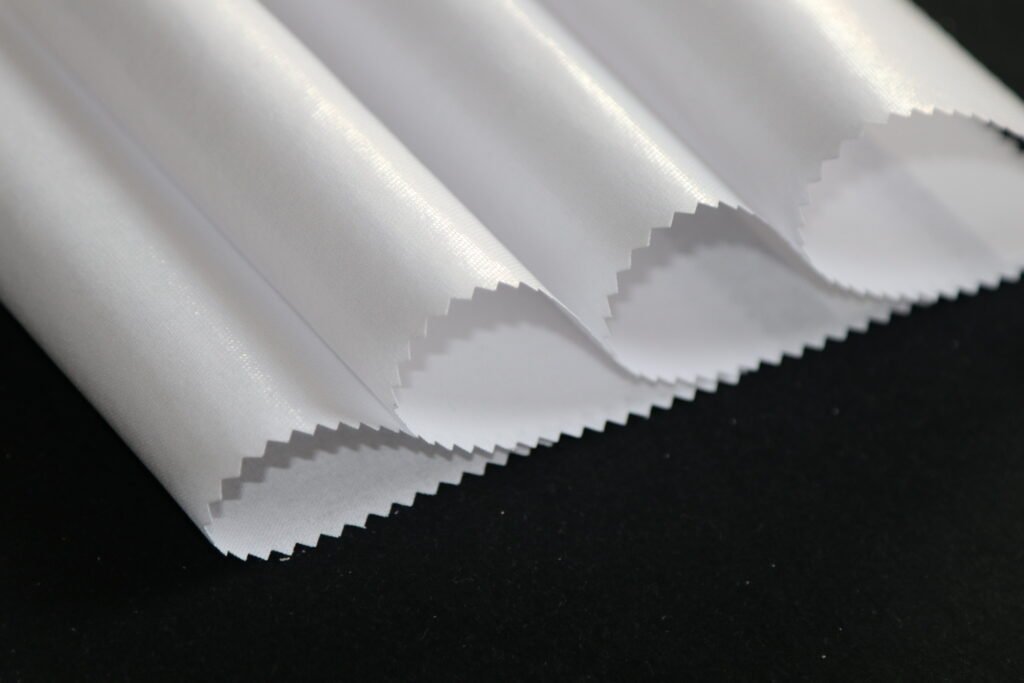Introduction
Have you ever wondered how some clothing items maintain shape and structure, even after years of use? The secret lies in the use of fusible interlinings.
Fusible interlinings are essential in garment construction, providing support, shape, and fabric stability. They reinforce collars, cuffs, waistbands, and other areas that need additional structure.
However, with so many fusible interlinings on the market, choosing the right one for your project can take time and effort. Using the wrong type of interlining can result in a garment that doesn’t look or fit as intended, so it’s important to understand the different types of fusible interlinings and their properties.
This blog post will provide all the information you need about fusible interlinings. We’ll discuss the different types of interlinings available and their uses, how to choose the right interlining for your project, and how to apply fusible interlinings properly. We’ll also provide troubleshooting tips for common issues that may arise when using fusible interlinings.
Whether you’re a beginner or an experienced seamstress, this post will provide you with the knowledge and skills to work with fusible interlinings confidently. So, let’s dive in and explore the world of fusible interlinings!

What Are the Most Popular Types of Fusible Interlinings?
Fusible interlinings are a crucial component in garment construction that helps to stabilise fabrics, add structure, and provide additional support. Various fusible interlinings are available on the market, each designed to suit specific materials, garment types, and construction techniques. Here are some of the most popular types of fusible interlinings:
Woven Fusible Interlinings
Woven fusible interlining is made of woven cotton, polyester, or both. It is a versatile interlining used on various fabrics, including lightweight materials such as silk and light cotton and heavier fabrics such as denim and wool.
Non-Woven Fusible Interlinings
Non-woven fusible interlining is made of synthetic fibres that are bonded together. It is ideal for use on lightweight fabrics and is commonly used in shirt collars, cuffs, and plackets.

Knit Fusible Interlining
Knit fusible interlining is made of a knitted fabric bonded to a fusible adhesive. It is stretchy, making it suitable for use in stretch fabrics such as knitwear and jersey.
Fusible Tape
Fusible tape is a narrow fusible interfacing strip that stabilises seams and hems. It is an ideal solution for fabrics that are too delicate to handle regular interfacing.
Sheer Fusible Interlining
Sheer fusible interlining is made of a lightweight, sheer fabric such as silk or organza. It stabilises sheer fabrics, particularly in collars, cuffs, and button plackets.
How to Choose the Right Fusible Interlining?
Choosing the right fusible interlining is crucial for achieving the desired results in garment construction. The interlining is an invisible layer between the fashion fabric and the lining or backing material. It provides support, shape, and stability to the garment, enhancing its overall appearance and durability. Here are some factors to consider when selecting a fusible interlining:
Fabric Type
The fabric of the garment determines the type of fusible interlining to use. Lightweight materials, such as silk or chiffon, require a lightweight interlining, while heavier materials, like denim or wool, require a more substantial interlining. The interlining should match the fashion fabric’s weight, drape, and texture.
Garment Style
The style of the garment also influences the choice of interlining. For example, a tailored jacket may require a stiffer interlining to maintain its shape, while a flowing dress may need a softer, more flexible interlining.
Colour and Opacity
The colour and opacity of the interlining should match the fashion fabric to avoid any visible lines or shadows. Lighter-coloured materials generally require lighter-coloured interlinings, while darker fabrics require darker interlinings.
Care Instructions
The care instructions of the interlining should match those of the fashion fabric. For example, the interlining should be drily cleanable if the garment requires dry cleaning.
By considering these factors, you can choose the right fusible interlining to ensure the success of your garment construction project.
How to Apply Fusible Interlinings?
Fusible interlinings are an essential component of garment construction. They add structure, stability, and body to fabrics and can be applied to various materials. However, using fusible interlinings can be tricky if you are unfamiliar with the process.
This section will provide step-by-step instructions on applying fusible interlinings to fabric and some tips to help you achieve a professional-looking finish.
Prewashing and drying the fabric and interlining are important to prevent any shrinking or puckering after application. Next, cut the interlining to the same size as the fabric piece you will apply to, leaving a small margin around the edges.
Place the interlining with the adhesive side facing the wrong side of the fabric, and apply heat using an iron set to the appropriate temperature for the interlining and fabric type. Use a pressing cloth to protect the material and interlining from direct heat, and hold the iron in place for a few seconds, allowing the adhesive to melt and bond the interlining to the fabric.
Once the interlining has been applied, allow it to cool completely before handling or sewing the fabric. If you need to trim the edges of the interlining, do so carefully to avoid cutting through the bonded area.

Troubleshooting Common Issues in Fusible Interlinings
Fusible interlinings can be a valuable tool in garment construction, but they can present certain challenges, like any technique or material. Fortunately, many common issues with fusible interlinings can be easily remedied with some troubleshooting.
One of the most common problems when working with fusible interlinings is bubbling or wrinkling. This can occur if the interlining needs to be properly applied to the fabric. Ensuring the interlining is evenly and thoroughly fused to the material is important to avoid this issue. This can be achieved by using a pressing cloth, applying pressure with an iron, and not moving the fabric while it is being fused.
Another issue that can arise is adhesive bleed-through. This occurs when the adhesive from the interlining seeps through to the right side of the fabric, leaving visible marks or stains. To prevent this, it is important to use a high-quality fusible interlining and avoid overheating or over-pressing the material. Using a pressing cloth and allowing the fabric to cool completely before moving it is also helpful.
Fusible interlinings can also become detached from the fabric over time, resulting in unsightly bulges or gaps. This can occur if the interlining is improperly fused or the garment is subjected to frequent wear and tear. To prevent this from happening, it is important to follow the manufacturer’s instructions for fusing the interlining and to use a strong, high-quality interlining.
Using Fusible Interlinings in Garment Construction
Fusible interlinings help to provide structure and stability to fabrics, making them easier to work with and resulting in a professional-looking finish. There are several ways to use fusible interlinings in garment construction, depending on the project and the desired outcome.
One common use for fusible interlinings is to reinforce areas of a garment that may be subject to stress or strain, such as collars, cuffs, and waistbands. By adding a layer of fusible interlining to these areas, the garment will be better able to withstand wear and tear over time. This can be particularly important for garments worn frequently, such as workwear or sportswear.
Another way to use fusible interlinings in garment construction is to add structure and shape to fabrics that may otherwise be too soft or floppy. For example, a lightweight cotton fabric may benefit from adding a fusible interlining to create a stiffer, more structured look. This technique is commonly used to construct tailored garments, such as blazers and suits.
Fusible interlinings can also be used to add warmth and insulation to garments. By adding a layer of fusible interlining between the outer fabric and the lining, the garment will be better able to retain heat and provide insulation against the cold. This technique is particularly useful in winterwear, such as coats and jackets.
Using fusible interlinings in garment construction is a versatile and effective way to achieve professional-looking results. By understanding the different types of interlinings available and how to apply them correctly, sewists can create functional and stylish garments.
Whether adding structure to a tailored jacket or reinforcing the collar of a dress shirt, fusible interlinings are a valuable tool in any sewing kit.
Fusible Interlinings: Conclusion
Fusible interlinings are a key component in the construction of high-quality garments. With their ability to add structure, stability, and reinforcement to fabrics, they are an essential tool for any sewist looking to achieve a professional-looking finish.
By understanding the different types of interlinings available and how to apply them correctly, sewists can improve the quality and durability of their garments. Whether constructing tailored jackets or simply reinforcing collars and cuffs, fusible interlinings are a versatile and effective way to enhance the functionality and appearance of any sewing project.
So next time you embark on a sewing project, consider incorporating fusible interlinings to take your work to the next level.
Contact Us to purchase a high-quality fusible interlining and bring your garments an excellent look.

